OK I did it. Finally.

Raw material.
Last summer I thought I'd try the Fancy Feast stove or the Fancy Feest or whatever you want to call it.
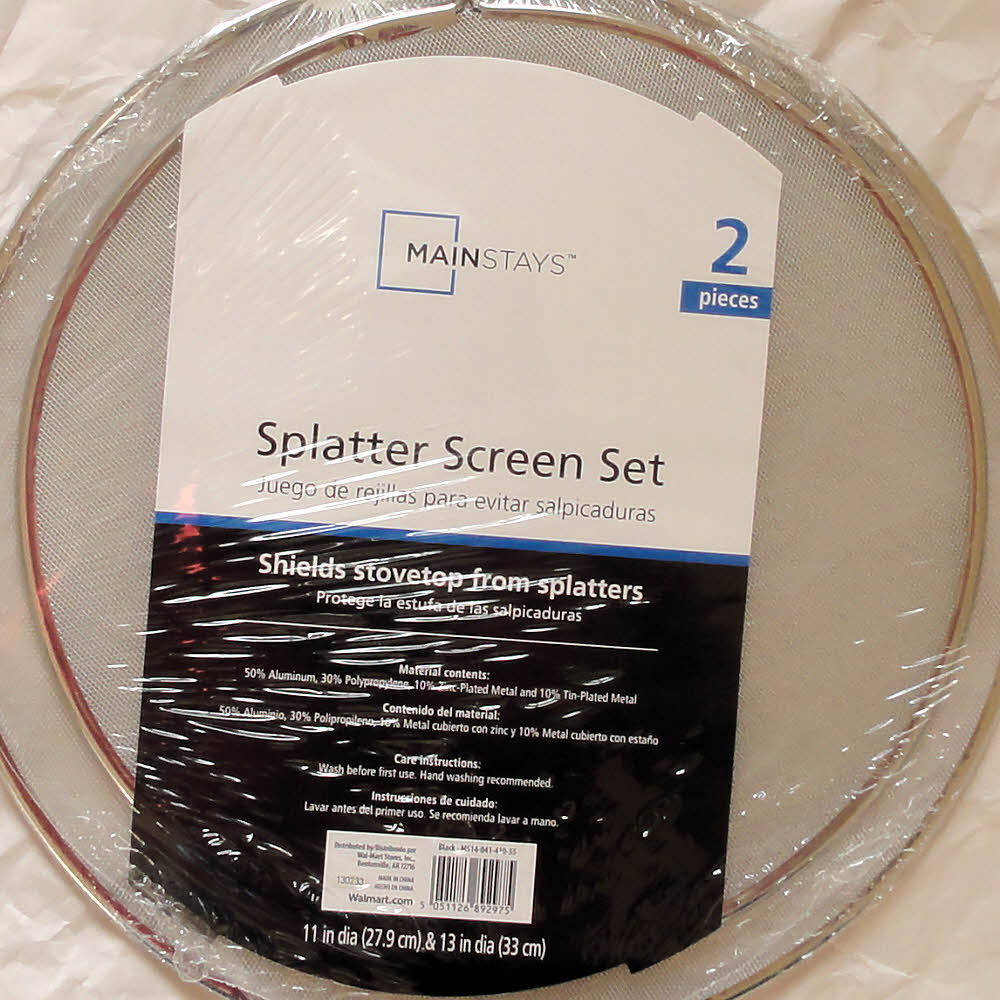
Original screening.
If you can call it it. Because there are several varieties going under identical or similar names. I chose the one that had the pot sitting on a screen sitting inside a cat-food-sized-can. Not a great design, but this was a feasibility study.
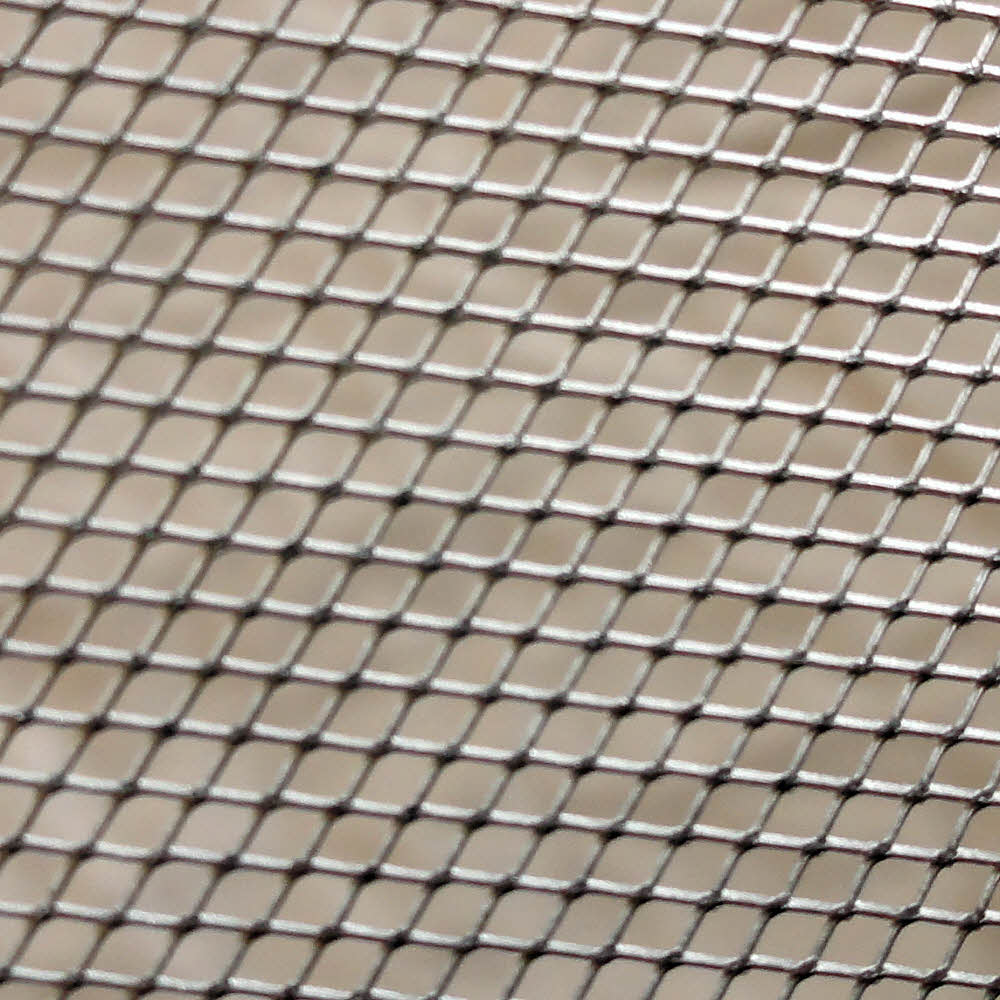
Closeup view (kina blurred, I know...).
For the last 14+ years I've been using a pot stand made of half-inch hardware cloth, with the stove sitting on the ground (on top of a reflector). In my scheme the stove provides heat but no support. My pot stand is as wide as I can make it, given the size of my "pot" (an aluminum cup). That means that the pot has a wide and stable support.
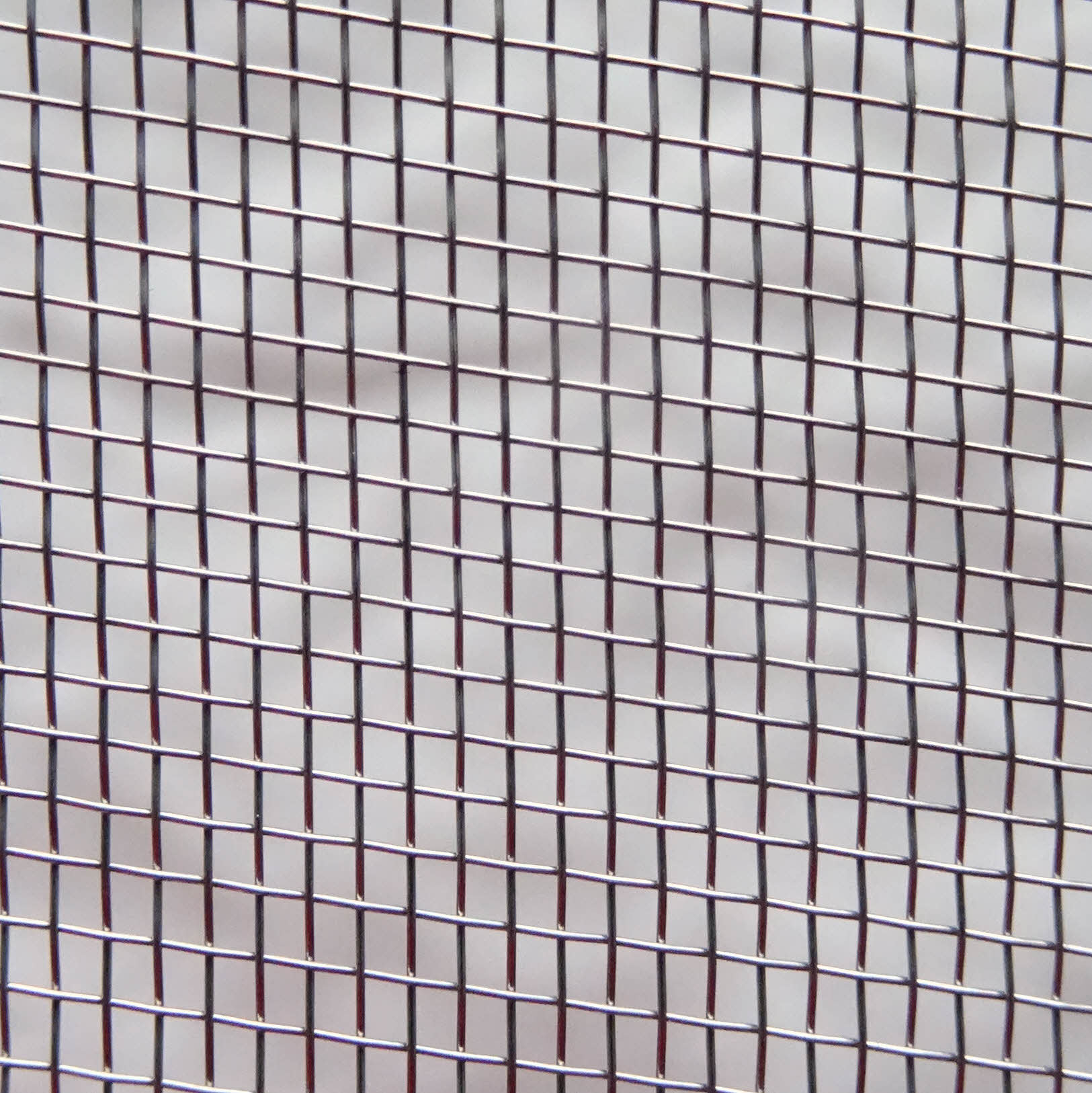
The new stuff (much better).
The Fancy Feast-style of stove puts the cooking pot on top of a stove whose base diameter is 2.3 inches (60mm). My current pot stand is 3.25 inches (83 mm), so it's roughly an inch larger in diameter. This can save lunch.
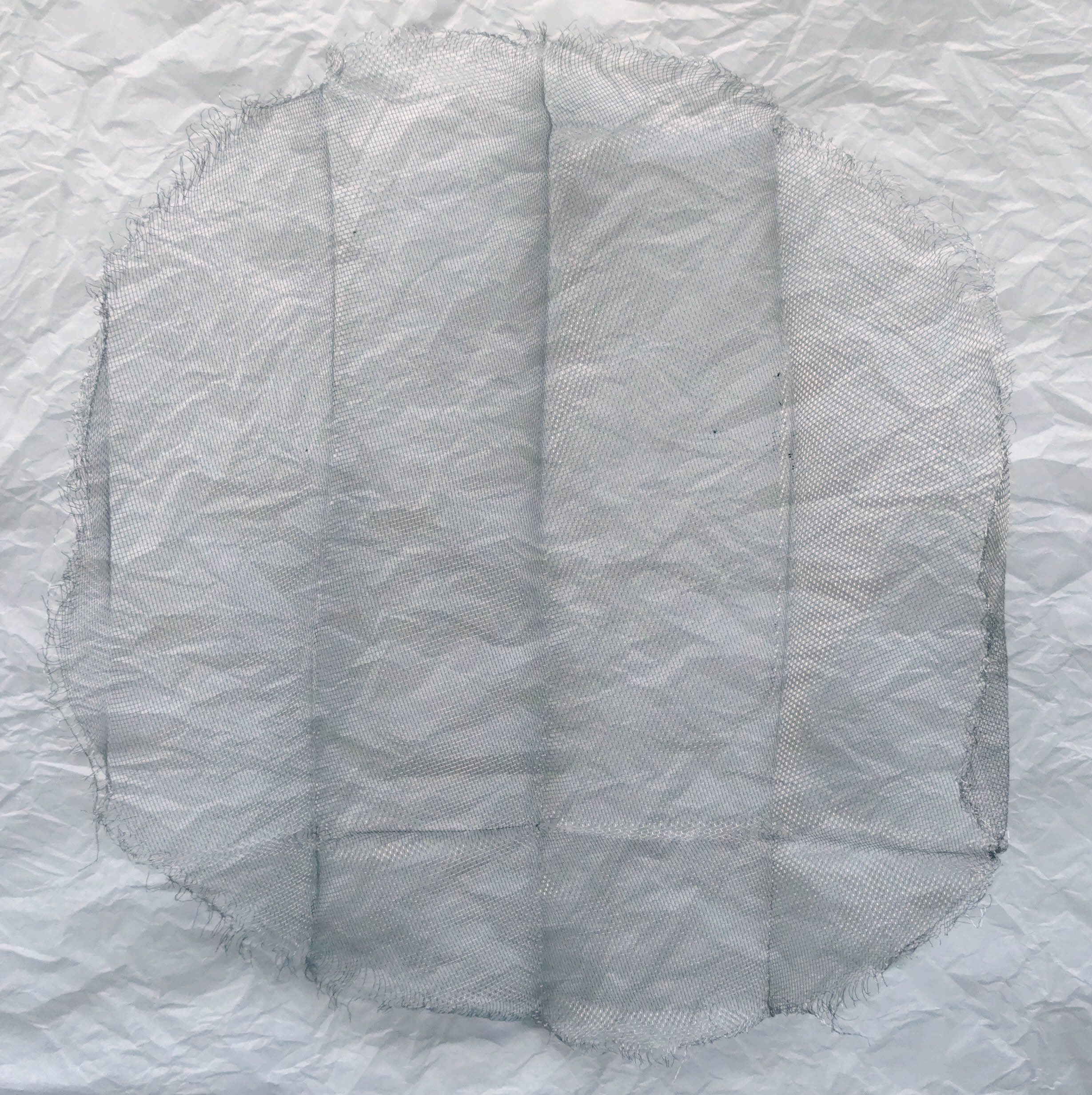
Screen cut out of its retaining ring.
A tippy pot support is never good. And besides being wider, my hardware-cloth stand has sharp nubbins on both ends. These bite into the bottom of my pot and the ground, adding to stability.
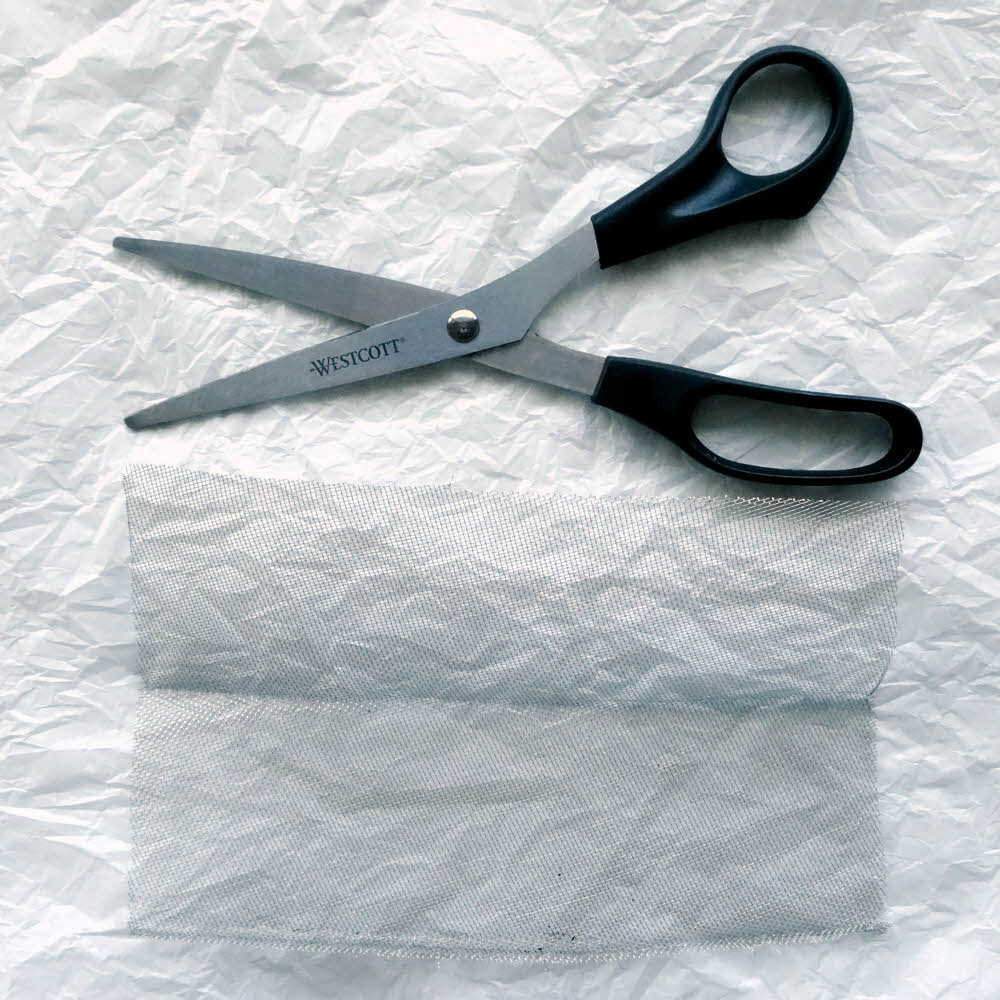
A double-width section cut to size.
But the Fancy Feast seemed worth trying, so I tried it.
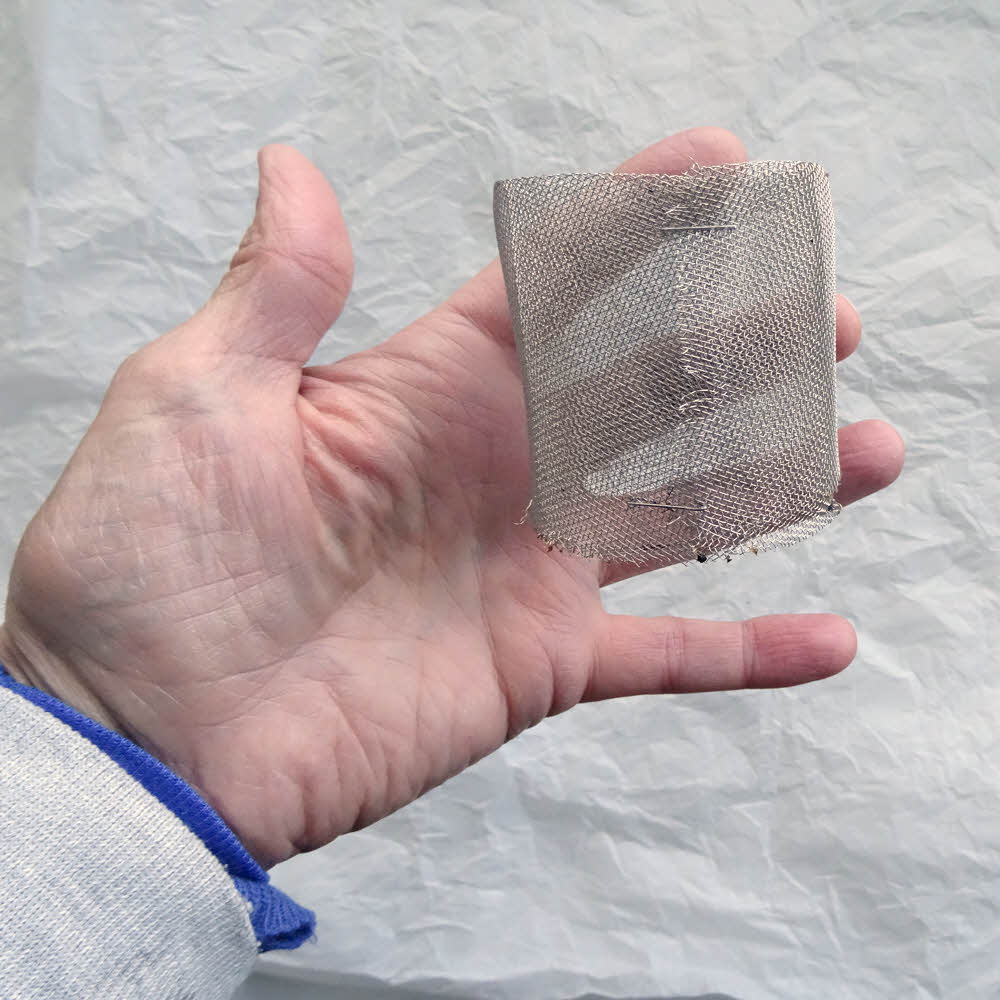
Rolled, with ends stapled together.
I got a cheap frying-pan spatter screen from Wally World and cut out the screen. Then I rolled it into a tube and stuck that inside an empty can of potted meat. Inside the can I have a small wad of fiberglass insulation. The fiberglass insulation helps a bunch in getting the alcohol lit, especially on cold days. On several cold days I've had to use half a dozen matches before I managed to get my stove lit, and then had it go out again due to frigid fuel.
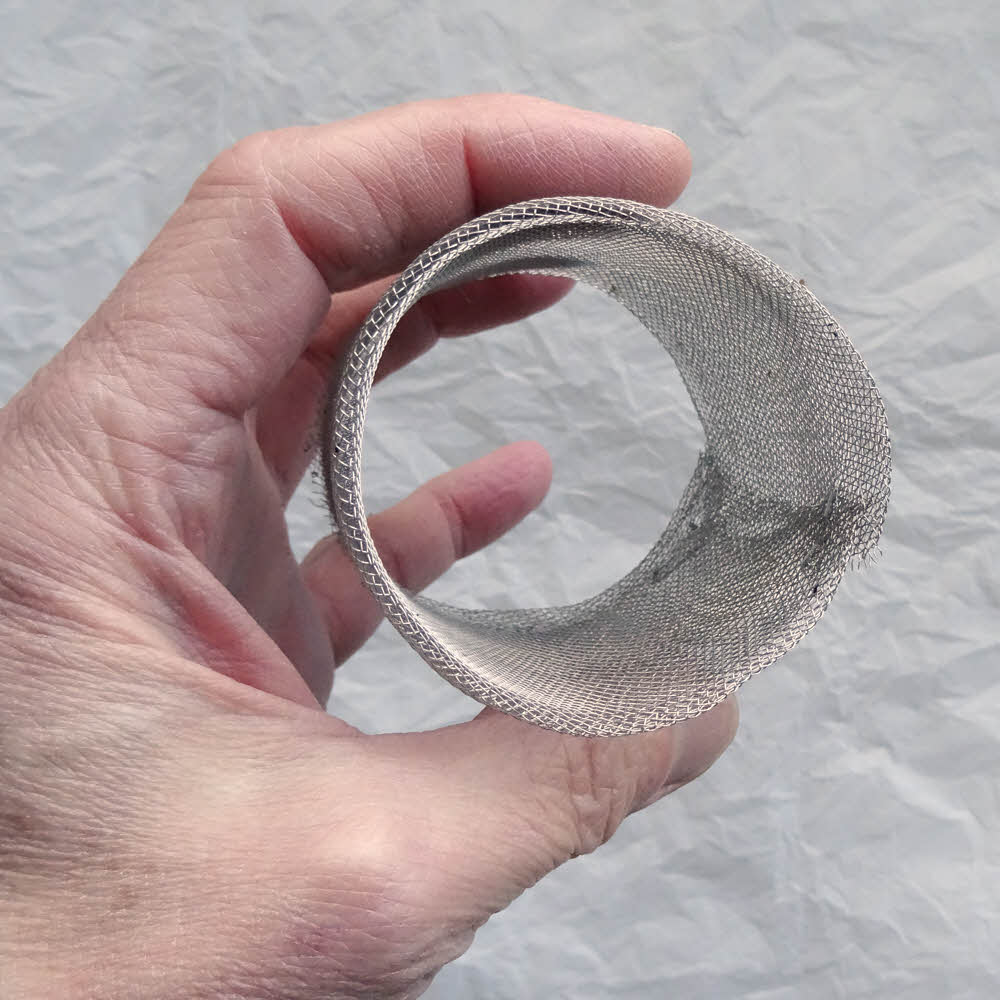
Top view of the same.
Fiberglass has thousands of tiny points and all sorts of thin, interlocked fibers that increase the surface area hugely, giving a match flame a much bigger chance of lighting the fuel. Fiberglass also mediates the burning, so the fuel isn't barely burning, then raging, and then suddenly out altogether. With fiberglass I get a much more even response all the way through, and as I said, the stove is immensely easier to light with a fiberglass wick.
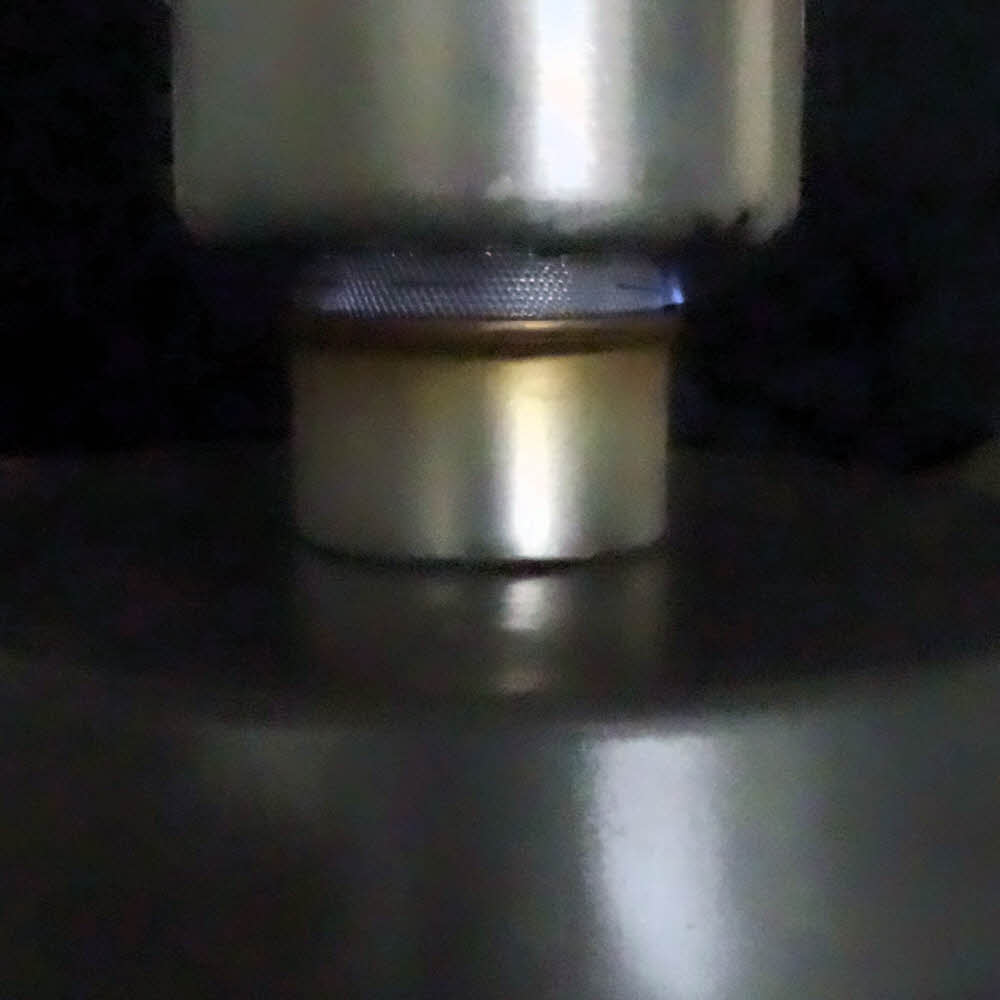
Last summer's version burning.
So last summer I made the screen and tried the stove. It worked really well but had problems:
- It was too narrow as a pot stand.
- The screen wasn't stiff enough.
- The screen wasn't durable enough.
- The stove had to prime itself.
What's that last point?
Well, putting the pot on top of the screen after lighting the stove snuffed the stove out. I had to wait a minute or two (a minute or two) for the stove to get up to working temperature and heat up the screen, and then it was great, but not before.
And where are we today?

Today's version (very crummy photo, innit?).
Mostly at the same place.
The original screen that I got at Wally World was punched-and-expanded aluminum — very cleverly done, but an aluminum screen is not going to stand up to intense heat for long, so recently I bought another screen. This one is definitely steel, and woven of wires. Maybe it isn't stainless steel, but I don't really care about that.
Also, I wanted to leave a gap between the top of the screen and the bottom of my pot so the screen would act as a kind of chimney and draft-defeater, but because of the gap between the screen and the pot, setting my pot down wouldn't put out the stove.
Waiting one or two minutes for the stove to reach operating temperature is nuts, so I used my pot stand to support the pot, and let the stove do only the heating.
Results.
Eh. Not much to rave about, but I think I'll try this new setup on the trail.

Today's screen mounted in potted meat can.
The screen adds a few grams to the stove, but should protect and steady the stove's flame while routing the flame straight up to the bottom of the pot. That's what I want most.
I use a full-coverage windscreen made of folded aluminum foil (see link to previous post). I also have some aluminum foil wrapped around my pot support. Adding this new screen will give me a third layer of protection. Ideally, I'd like to have a hot flame burning in still air, and now I have three shots at getting to that state.
Better stove efficiency means the fuel goes farther, or the cooking goes faster, or both. Them are both good. Not having my stove fall over is a third good thing, which is why I'm staying with my pot support.
And, on top of all that, I'm not really ready to do a lot more experimenting. I've used Sgt. Rock's Ion stove for years, but the heat output is low, and partly because the flame is small, it's sensitive to being blown around by the lightest whiff of air.
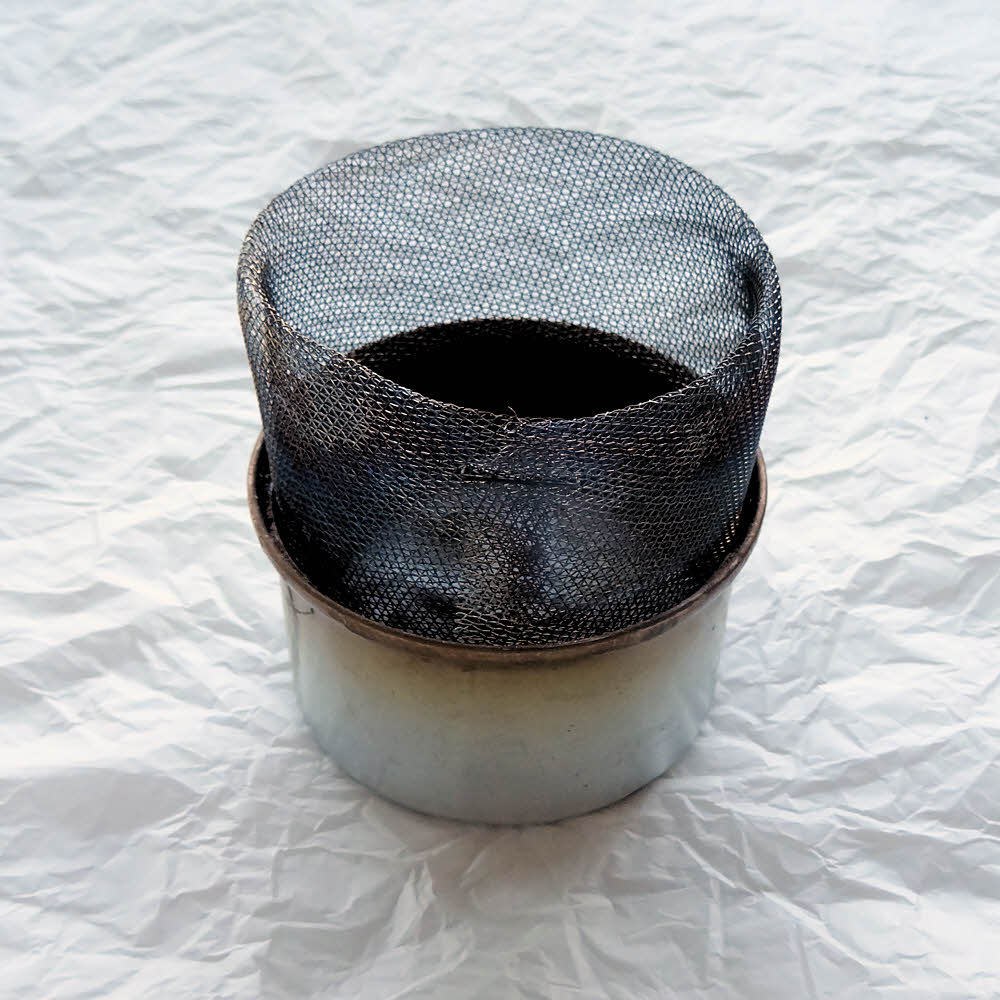
Top view. (Yes, it is a crude hack job.)
Using a wide-open cat-food-sized-can gives a bigger flame but a sloppier flame. Adding a fiberglass wick helps, but it's still a big, sloppy flame. This new screen ought to improve things even though I have been actually getting by fine. It's an improvement, not a revolution.
I think I'll stop here unless I have a real need to change things. The other Feast/Feest stove models don't look interesting.
- The (Andrew Skurka) version with holes punched in its sides shoots flame out the sides where it does no good.
- The spacecraft-quality solid-chimney model from Zelph does more than I need and would be unstable anyway, if I did use the stove as a pot support.
- The 2007 pot-stand-and-stove version with a stainless-steel screen is another wobbly variation I can do without, although it is nicely made.
More.